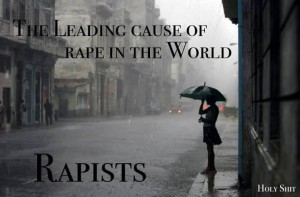“How often do you train?” The question was asked on an internet forum, and a look at the answers revealed that most forum members had muddled the difference between education, training, and practice. These are three different words that mean different things. All three are absolutely necessary for anyone who wants to be truly prepared to protect themselves in violent circumstances.
Definitions
First up, there’s education. Education happens when you learn something in an academic sense. When you read a book or listen to a lecture — that’s education. Education can involve getting your hands dirty, but usually it doesn’t (that comes later). It usually involves planting your butt in a chair and studying.
Then there’s training. Training often includes an educational component, but it doesn’t always. Training is the hands-on part of learning. Driver education, which takes place in a classroom, is followed by driver training, which takes place behind the wheel. A college education is followed by on-the-job training. Training builds physical skills on top of an existing education.
Finally, there’s practice. Practice is something you do on your own. It’s where you take the education you’ve acquired, and the training you’ve received, and make it your own by building it into your habits. Practice is absolutely vital. It’s also pointless, or even counterproductive, unless it is built on a foundation of good education and training.
All you have to do
Let’s walk through that last idea a little more completely. Start with this: it’s tempting to believe that when our brains know something, then obviously our hands also know it. But tempting as it is to believe, that’s not true. To illustrate that point, let me give you a story straight out of history, one about Johann Sebastian Bach, the famous composer. When someone commented about his remarkable ability to play the organ with such skill, Bach reportedly replied, “There is nothing remarkable about it. One has only to hit the right notes at the right time, and the instrument plays itself.”
 Was Bach being flippant, or profound? Musicians have debated that question for many years now. Personally, I think Bach was onto something: you can teach someone anything they need to know about playing a keyboard instrument – a piano, an organ, a harpsichord, whatever – in just a few minutes. How? Like this: “Here is a piece of paper covered with lines and dots. When you see this particular mark in that location, press this key for x amount of time. When you see the same mark in a different location, press that key for the same amount of time.” As soon as you have memorized the different marks and what they mean – which truly can be done in less than a day! – your brain now knows exactly how to play the piano. As Bach said, you just have to hit the right notes at the right time. That’s all.
Was Bach being flippant, or profound? Musicians have debated that question for many years now. Personally, I think Bach was onto something: you can teach someone anything they need to know about playing a keyboard instrument – a piano, an organ, a harpsichord, whatever – in just a few minutes. How? Like this: “Here is a piece of paper covered with lines and dots. When you see this particular mark in that location, press this key for x amount of time. When you see the same mark in a different location, press that key for the same amount of time.” As soon as you have memorized the different marks and what they mean – which truly can be done in less than a day! – your brain now knows exactly how to play the piano. As Bach said, you just have to hit the right notes at the right time. That’s all.
Wait, you say, that’s not enough? My point exactly! It’s not enough to educate your brain about a physical skill. If you want to play the piano, you also have to train your hands what to do (that training almost always happens under the skilled tutelage of a good teacher). Then you have to practice on your own until your hands always do what they’re told, every time without fail.
Marty Hayes, Director of the Firearms Academy of Seattle, may not realize this, but he often channels the spirit of Bach in his classes. Here’s one of his favorite lines: “There’s only one real secret to accuracy: If your sights are lined up when the hammer falls, you’ll hit the center of the target every time.” Students chuckle, as if they suspect him of being flippant. But that truly is the secret of accurate shooting. There is no other.
Of course, knowing what to do is not quite the same thing as doing it. And that brings us to what happens when we try to do any of these steps – education, training, practice – out of sequence, or without building on the others.
Three guys
Here’s a guy. We’ll call him Joe Shootsalot. Joe wants learn how to shoot. So he goes down to the range and he practices several times a week for a year. But he practices all the wrong things, so he builds some bad habits — including at least one unsafe one that he doesn’t realize he’s doing. At the end of the year, he has burned through thousands of rounds, but he’s shooting only marginally better than he was at first. He might even be shooting worse, because he’s developed a bad flinch he doesn’t know how to shake.
Here’s another guy. We’ll call him Steve Thinksalot. Steve wants to know how to shoot. So he buys a boatload of books, subscribes to six different gun magazines, and hangs out on firearm forums. He reads about shooting for an entire year and he argues about it endlessly online. But he never practices, so he builds no physical habits at all. Worse than that, when he finally does decide to get off the couch and onto the range, he has no patience with working on the basics that form the foundation of all shooting skill. He’s above all that! He can already describe, in great and animated detail, everything about a good trigger press or an ideal draw or a solid reload. And he truly believes he’s doing those things. He’s not. He can’t reliably do any of it, because he hasn’t taken the time to build that knowledge into his muscles through deliberate practice. His hands don’t know what his brain does. When things don’t go as he’d planned, he blames his equipment, or the weather, or the phases of the moon. Never himself. Worse, you can’t teach him anything, because he already knows it all.
Here’s one more guy, Tim Trainsalot. Tim loves to take classes. It’s his favorite thing to do. He has taken dozens of classes, but he never practices anything he learns in class. He never makes it his own. At the end of a year, he’s shooting almost exactly the same as he was before — and the people who see him shoot conclude that training is worthless because it didn’t do anything for Tim. Worse, Tim has a super-high confidence level that’s bolstered by all those certificates in his training notebook. But because he never practices, his high confidence level is not congruent with physical reality.
Bottom line
What Joe, Steve, and Tim — and Jane, Sally, and Tina — need to do is build their skills on a solid foundation. Joe needs to slow down and learn something before he engrains bad habits. Steve needs to get off his rear end and put what he’s learned to the test, before he gets to the point where he knows it all and can’t do a single thing. And Tim needs to find the self-discipline to practice what he’s learned in class, before it fades from memory.
To be well-prepared to protect themselves, shooters need a solid dose of all three components at the right time and in the right order: education, training, and practice.







